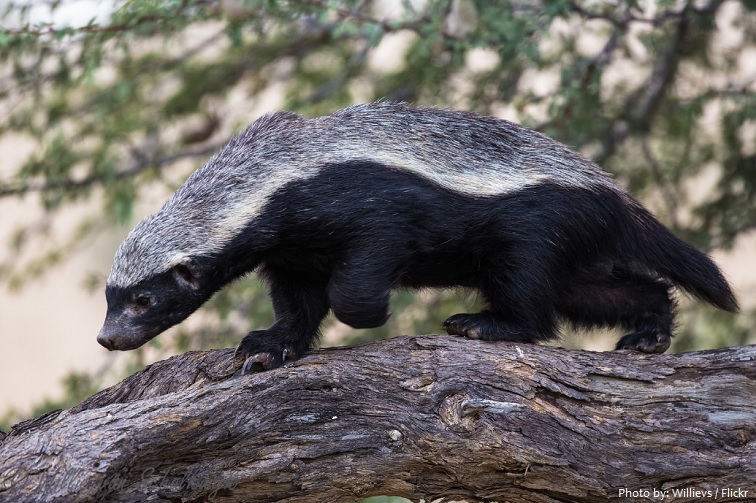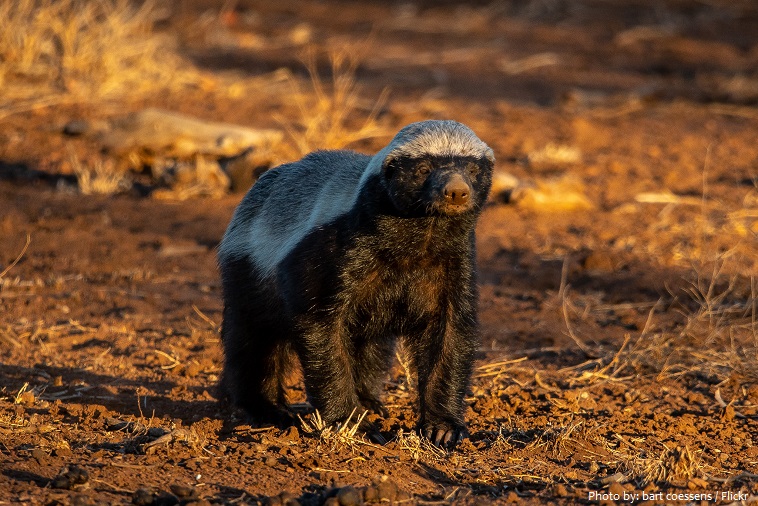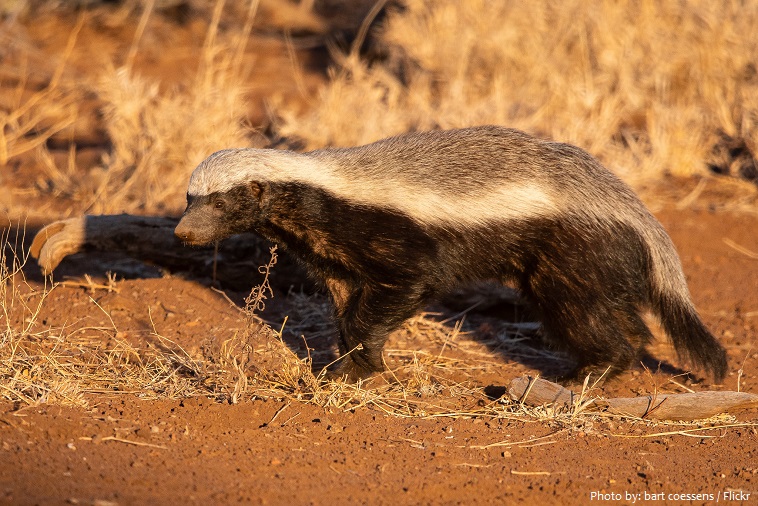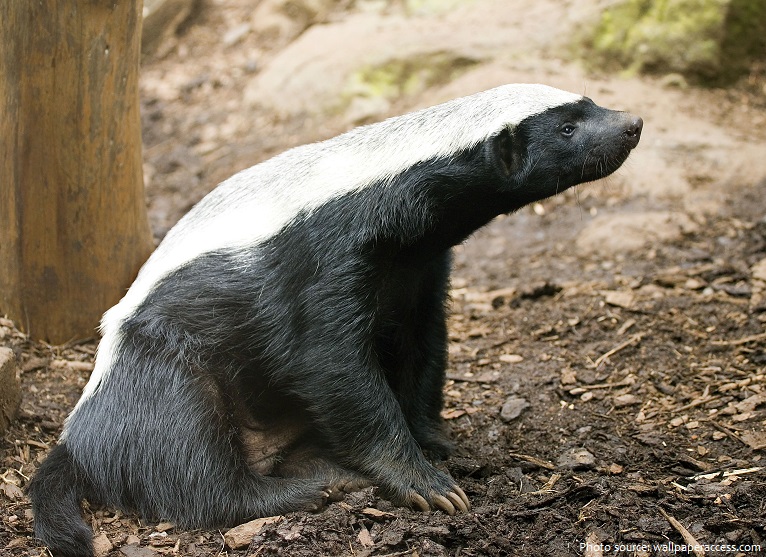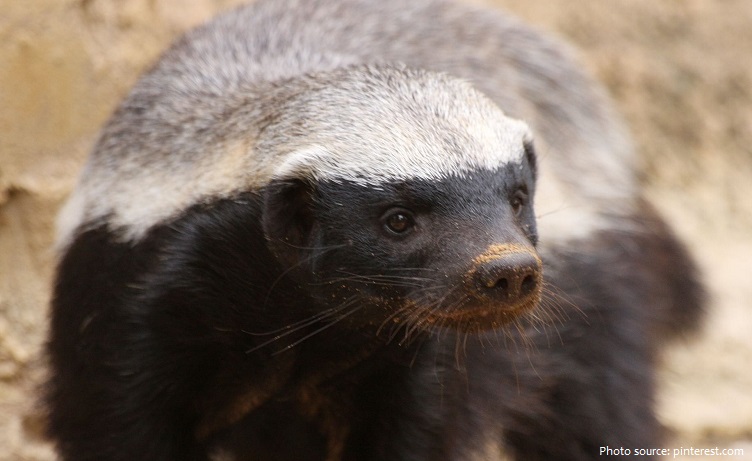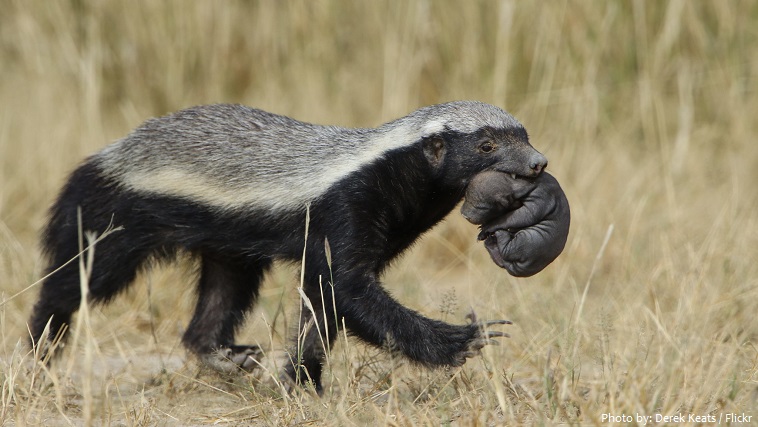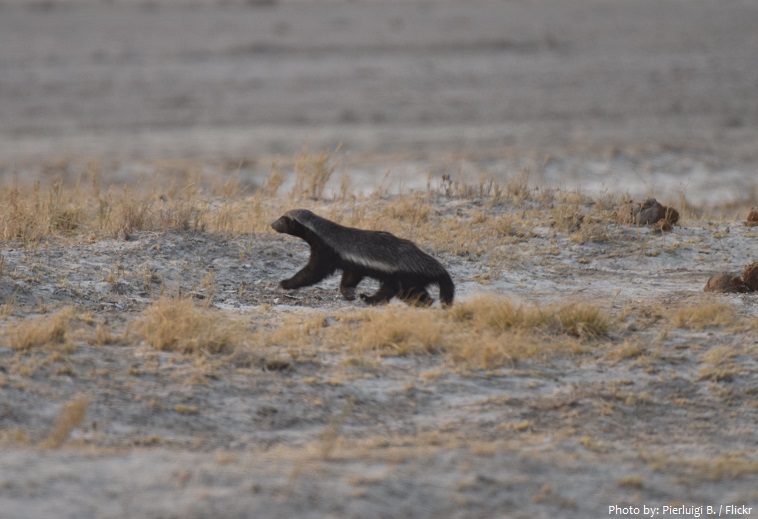The honey badger or ratel is a badger-like member of the weasel family (Mustelidae) noted for its fondness for honey.
It is widely distributed in Africa, Southwest Asia, and the Indian subcontinent.
The honey badger is found mainly in dry areas but are also found in forests and grasslands.
It is known to range from sea level to as much as 2,600 meters (8,539 feet) above sea level.
The average lifespan for honey badgers is from 7 to 8 years in the wild, while in captivity individuals may live up to 24 years.
Honey badgers measure 23 to 28 cm (9.1 to 11.0 in) in shoulder height and 55–77 cm (22–30 in) in body length, with the tail adding another 12–30 cm (4.7–11.8 in). Females are smaller than males.
This little creature critter has a stocky, flattened body with short, strong legs, along with long claws on the front feet for digging and defense.
The honey badger’s fur is thick and coarse, mostly black, with a wide gray-white stripe that stretches across its back from the top of the head to the tip of the tail.
The honey badger’s skin is so thick that it can withstand bee stings, porcupine quills, and even dog bites!
Honey badgers are predominantly nocturnal but have been observed to switch to diurnal activity during the cold-dry months.
They live in burrows, traveling from burrow to burrow throughout their home ranges.
Honey badgers can run up to 25 to 30 kilometers (15 to 19 miles) per hour for short distances.
They are also good swimmers and can climb trees.
Honey badgers feed on small animals and fruit and on honey, which they find by following the calls of a bird, the greater, or black-throated, honey guide – the honey badger break open the bees’ nests to feed on the honey, and the birds in return obtain the remains of the nest.
They are smart animals and are one of few species able to use tools. In the 1997 documentary series Land of the Tiger, a honey badger in India was filmed using a tool – the animal rolled a log and stood on it to reach a kingfisher fledgling stuck up in the roots coming from the ceiling in an underground cave.
Honey badgers often kill chickens that humans are raising for food. Because of their strength and persistance, they are difficult to keep away. They are known to rip thick planks from hen-houses or burrow underneath stone foundations.
Honey badgers as solitary animals, coming together only briefly for mating.
Honey badgers do not have a breeding season. They tend to breed all year round. Their gestation period is thought to last six months, usually resulting in two cubs, which are born blind. The female will typically move the cubs to a new den every two to five days. After two months the cubs have developed eyesight and three months before they start foraging with their mother. It reaches adult size at 6 months is not ready to go off on its own until 14 months to 2 years of age, as the youngster needs time to develop those important hunting skills.
Because of its wide range and occurrence in a variety of habitats, it is listed as Least Concern on the IUCN Red List.
Lions and leopards are the main predators of honey badgers. A leopard will sometimes attack a young honey badger and grip it by the back of the neck, and prides of lions will sometimes team up and kill a honey badger, crocodiles may also snap up a honey badger.
Honey badgers seem to be resistant to snake venom.
Honey badgers are strong, fearless fighters but in captivity can become tame and playful.
They are related to skunks, otters, ferrets, and other badgers.
The honey badger is listed as the “world’s most fearless animal” in the 2002 edition of the Guinness Book of World Records.
The 2011 YouTube viral video The Crazy Nastyass Honey Badger popularized the image of honey badgers as fearless and erratic, including the catchphrase Honey badger don’t care.
